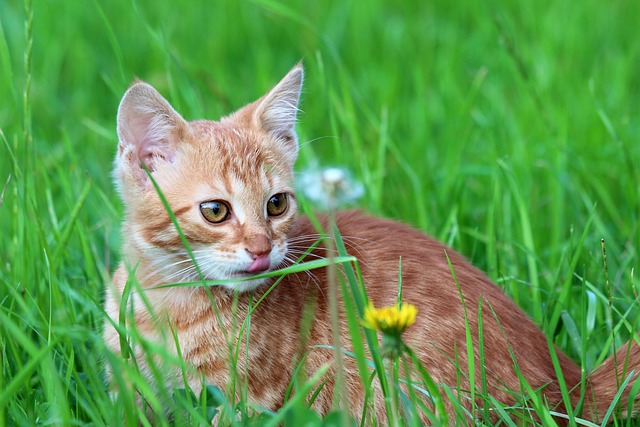Overview: Peritonitis in cats refers to the acute inflammation of the peritoneum, the tissues lining the abdominal cavity. This condition can be caused by various factors, including infections, tumors, congenital defects, trauma, and more. It is a serious condition that requires prompt diagnosis and treatment, often involving surgery.
Symptoms:
- Lethargy
- Trembling
- Crying or whimpering
- Abnormal posture (guarding the stomach)
- Heavy breathing
- Swollen and rigid abdomen
- Diarrhea (may be black, known as melena)
- Vomiting if the stomach or intestines are involved
Diagnosis:
- Complete medical history
- Physical examination
- Fine needle aspiration of abdominal fluid for analysis
- Complete blood profile (CBC, chemistry panel, electrolytes)
- Urinalysis
- Visual diagnostics (X-rays, ultrasound) to examine the abdomen internally
Treatment:
- Surgery is often necessary
- Intravenous fluid therapy to address dehydration
- Pain medication for relief
- Medications to decrease stomach acids, coat the stomach, and control vomiting
- Antibiotics to inhibit bacterial infection
Living and Management:
- Intensive care may be required, potentially in an intensive care unit (ICU)
- Follow veterinary instructions for medication administration
- Monitor for changes, swelling, or pus
- Follow-up appointments with the veterinarian are essential for monitoring and recovery
Peritonitis in cats is a severe condition that demands immediate attention. Early diagnosis and intervention, often involving surgery, are crucial for the best outcomes. Pet owners should closely follow veterinary recommendations and seek prompt medical attention if any concerning changes occur in their cat’s condition.
Causes of Peritonitis in Cats:
- Infectious Causes:
- Bacterial Infections: Infections such as peritonitis can occur due to bacterial invasion. This can result from a penetrating wound, a ruptured organ, or secondary to another infection.
- Feline Infectious Peritonitis (FIP): FIP is a viral infection caused by a type of coronavirus. It can lead to the development of fluid in the abdomen (ascites) and is a severe condition in cats.
- Viral Enteritis: Certain viruses affecting the gastrointestinal tract can cause inflammation and peritonitis.
- Non-Infectious Causes:
- Trauma: Blunt or penetrating trauma to the abdomen can cause damage to internal organs, leading to inflammation.
- Tumors and Cancers: Abdominal tumors, whether benign or malignant, can contribute to peritonitis. Malignant tumors may invade surrounding tissues.
- Congenital Defects: Some cats may be born with abnormalities that make them prone to peritonitis.
- Obstruction: Blockages in the urinary or digestive tract can lead to a buildup of pressure, causing inflammation.
- Hernia: Hernias involving organs or tissues in the abdominal cavity can lead to peritonitis if there’s a rupture.
- Gastric Dilation and Volvulus (GDV): While rare in cats, this condition involves the stomach filling with gas and then twisting on itself, causing severe abdominal distress.
Diagnosis of Peritonitis in Cats:
- Physical Examination: The veterinarian will assess the cat’s overall condition, palpate the abdomen for pain or swelling, and observe for signs of distress.
- Diagnostic Imaging:
- X-rays: To visualize the abdominal organs and identify any abnormalities.
- Ultrasound: Offers detailed images of abdominal structures, helping to detect fluid or masses.
- Fluid Analysis: Taking a sample of abdominal fluid for analysis helps determine the nature of the inflammation and its possible causes.
- Blood Tests: A complete blood count (CBC) and blood chemistry panel provide information about the cat’s overall health and can indicate the presence of infection or organ dysfunction.
Treatment of Peritonitis in Cats:
- Surgery: If the cause of peritonitis is a ruptured organ, hernia, or other surgically correctable issue, emergency surgery may be necessary.
- Intravenous Fluid Therapy: To address dehydration and maintain electrolyte balance.
- Pain Management: Administration of pain medications to provide relief.
- Medication for Underlying Causes: Antibiotics for bacterial infections, antifungals for fungal infections, and other medications as needed based on the diagnosis.
- Nutritional Support: Ensuring the cat receives appropriate nutrition, especially if there is a reluctance to eat.
Living and Management After Treatment:
- Follow Veterinary Recommendations: Administer prescribed medications as directed and attend follow-up appointments.
- Monitoring: Keep a close eye on the cat for any signs of recurrence or new symptoms.
- Preventive Measures: Address underlying causes (e.g., dental disease, urinary tract issues) to prevent future episodes.
- Dietary Management: Follow any dietary recommendations provided by the veterinarian, especially if there are concerns about gastrointestinal health.
- Observe for Changes: Report any changes in behavior, appetite, or litter box habits promptly.
Peritonitis in cats requires comprehensive veterinary care, and successful management often involves addressing the underlying cause. Regular veterinary check-ups and a proactive approach to healthcare can contribute to the well-being of the cat.



